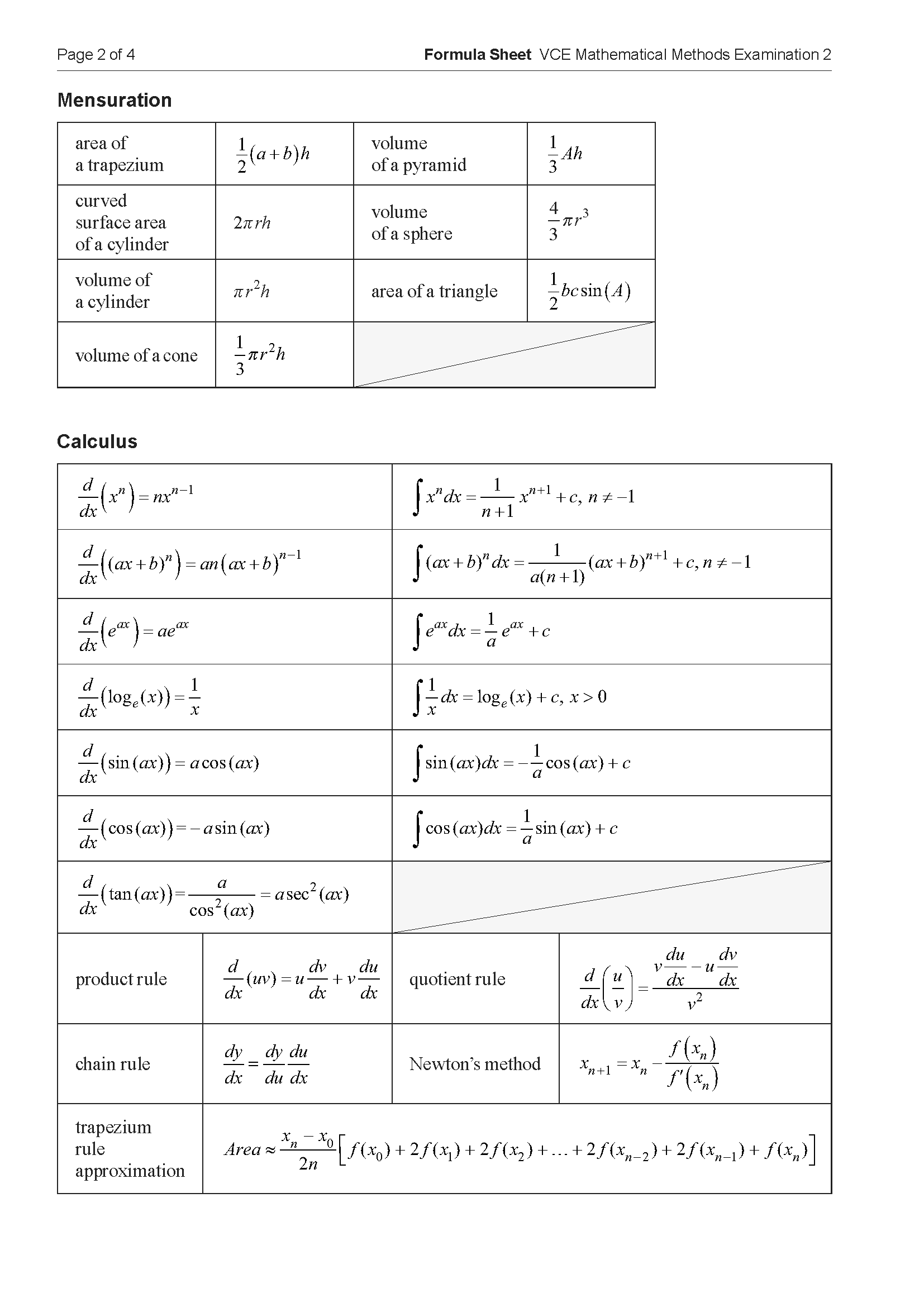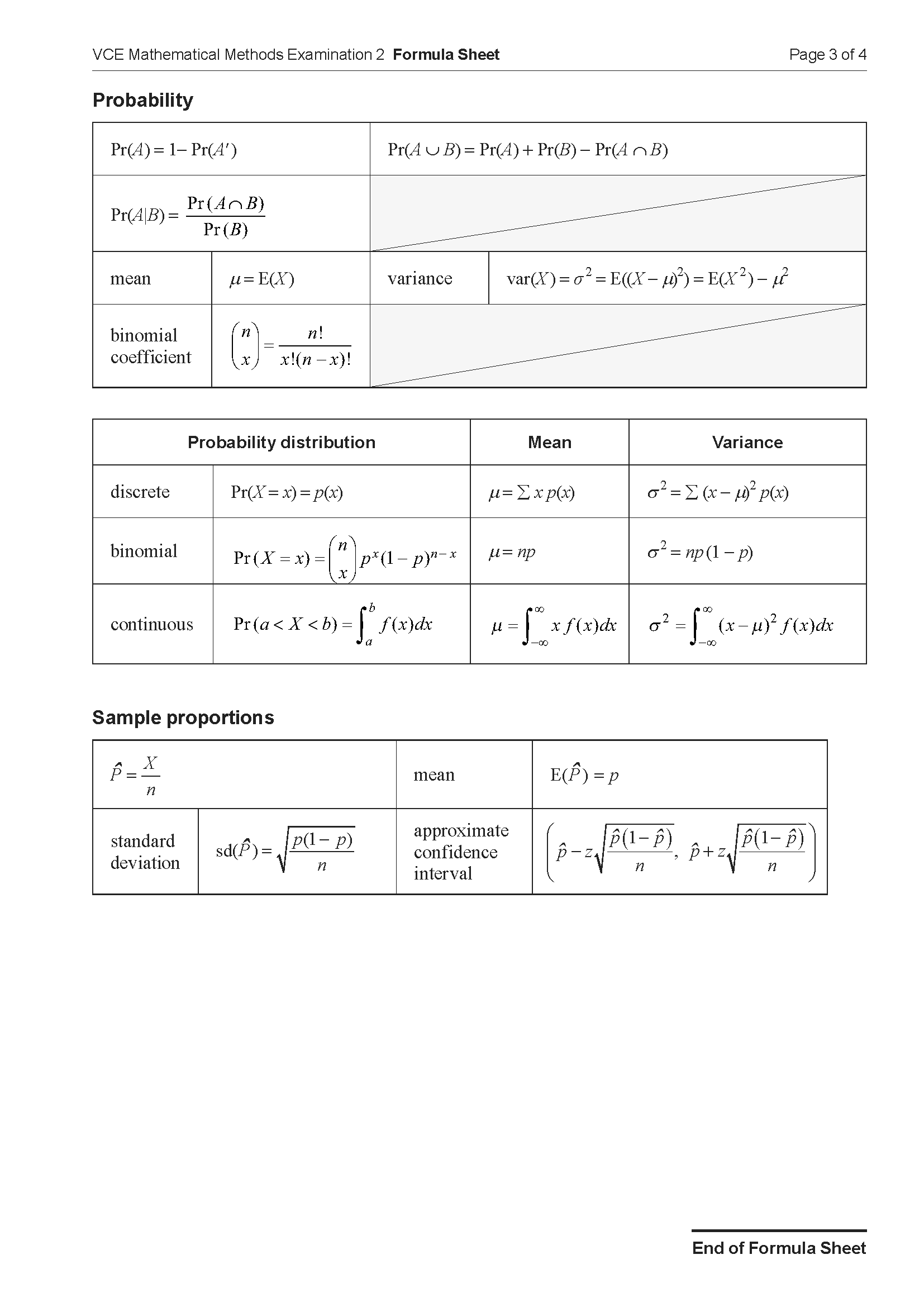2017 VCAA Maths Methods Exam 1
This is the full VCE Maths Methods Exam with worked solutions. You can also try Mini-Tests, which are official VCAA exams split into short tests you can do anytime.
Number of marks: 40
Reading time: 15 minutes
Writing time: 1 hours
Instructions
• Answer all questions in pencil on your Multiple-Choice Answer Sheet.
• Choose the response that is correct for the question.
• A correct answer scores 1; an incorrect answer scores 0.
• Marks will not be deducted for incorrect answers.
• No marks will be given if more than one answer is completed for any question.
• Unless otherwise indicated, the diagrams in this book are not drawn to scale.
a. Let \(f: (-2, \infty) \to R, f(x) = \frac{x}{x+2}\). Differentiate \(f\) with respect to \(x\). 2 marks
b. Let \(g(x) = (2 - x^3)^3\). Evaluate \(g'(1)\). 2 marks
Let \(y = x \log_e(3x)\).
a. Find \(\frac{dy}{dx}\). 2 marks
b. Hence, calculate \(\int_1^2 (\log_e(3x)+1)dx\). Express your answer in the form \(\log_e(a)\), where \(a\) is a positive integer. 2 marks
Let \(f: [-3, 0] \to R, f(x) = (x+2)^2(x-1)\).
a. Show that \((x+2)^2(x-1) = x^3 + 3x^2 - 4\). 1 mark
b. Sketch the graph of \(f\) on the axes below. Label the axis intercepts and any stationary points with their coordinates. 3 marks
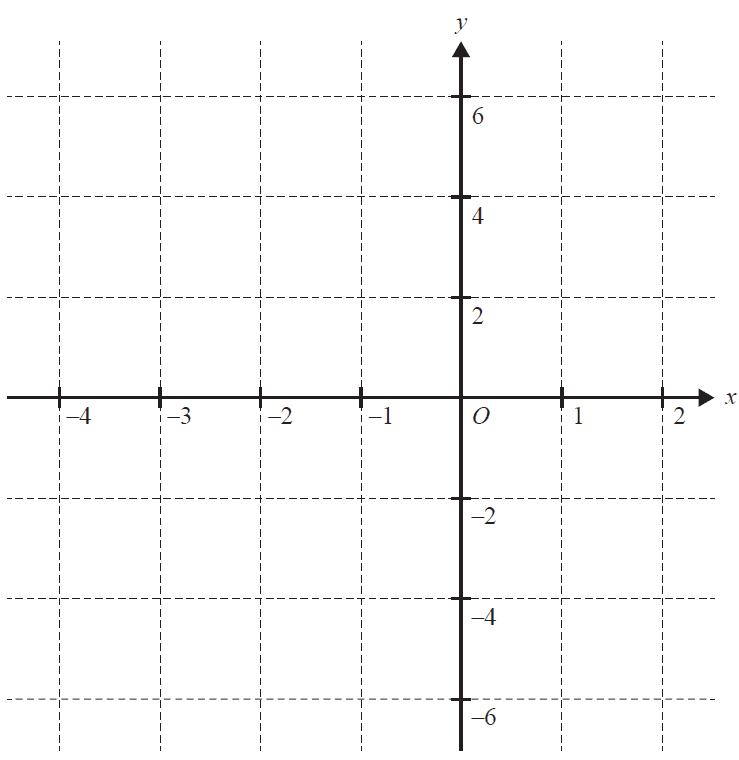
In a large population of fish, the proportion of angel fish is \(\frac{1}{4}\).
Let \(\hat{P}\) be the random variable that represents the sample proportion of angel fish for samples of size \(n\) drawn from the population.
Find the smallest integer value of \(n\) such that the standard deviation of \(\hat{P}\) is less than or equal to \(\frac{1}{100}\). 2 marks
For Jac to log on to a computer successfully, Jac must type the correct password. Unfortunately, Jac has forgotten the password. If Jac types the wrong password, Jac can make another attempt. The probability of success on any attempt is \(\frac{2}{5}\). Assume that the result of each attempt is independent of the result of any other attempt. A maximum of three attempts can be made.
a. What is the probability that Jac does not log on to the computer successfully? 1 mark
b. Calculate the probability that Jac logs on to the computer successfully. Express your answer in the form \(\frac{a}{b}\), where \(a\) and \(b\) are positive integers. 1 mark
c. Calculate the probability that Jac logs on to the computer successfully on the second or on the third attempt. Express your answer in the form \(\frac{c}{d}\), where \(c\) and \(d\) are positive integers. 2 marks
Let \((\tan(\theta)-1)(\sin(\theta)-\sqrt{3}\cos(\theta))(\sin(\theta)+\sqrt{3}\cos(\theta)) = 0\).
a. State all possible values of \(\tan(\theta)\). 1 mark
b. Hence, find all possible solutions for \((\tan(\theta)-1)(\sin^2(\theta)-3\cos^2(\theta)) = 0\), where \(0 \le \theta \le \pi\). 2 marks
Let \(f: [0, \infty) \to R, f(x) = \sqrt{x+1}\).
a. State the range of \(f\). 1 mark
b. Let \(g: (-\infty, c] \to R, g(x) = x^2+4x+3\), where \(c < 0\).
i. Find the largest possible value of \(c\) such that the range of \(g\) is a subset of the domain of \(f\). 2 marks
ii. For the value of \(c\) found in part b.i., state the range of \(f(g(x))\). 1 mark
c. Let \(h: R \to R, h(x) = x^2+3\).
State the range of \(f(h(x))\). 1 mark
For events \(A\) and \(B\) from a sample space, \(\Pr(A|B) = \frac{1}{5}\) and \(\Pr(B|A) = \frac{1}{4}\). Let \(\Pr(A \cap B) = p\).
a. Find \(\Pr(A)\) in terms of \(p\). 1 mark
b. Find \(\Pr(A' \cap B')\) in terms of \(p\). 2 marks
c. Given that \(\Pr(A \cup B) \le \frac{1}{5}\), state the largest possible interval for \(p\). 2 marks
The graph of \(f: [0, 1] \to R, f(x) = \sqrt{x}(1-x)\) is shown below.
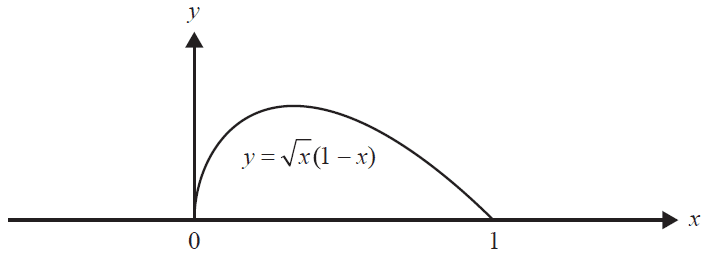
a. Calculate the area between the graph of \(f\) and the \(x\)-axis. 2 marks
b. For \(x\) in the interval \((0, 1)\), show that the gradient of the tangent to the graph of \(f\) is \(\frac{1-3x}{2\sqrt{x}}\). 1 mark
The edges of the right-angled triangle \(ABC\) are the line segments \(AC\) and \(BC\), which are tangent to the graph of \(f\), and the line segment \(AB\), which is part of the horizontal axis, as shown below. Let \(\theta\) be the angle that \(AC\) makes with the positive direction of the horizontal axis, where \(45^\circ \le \theta \le 90^\circ\).
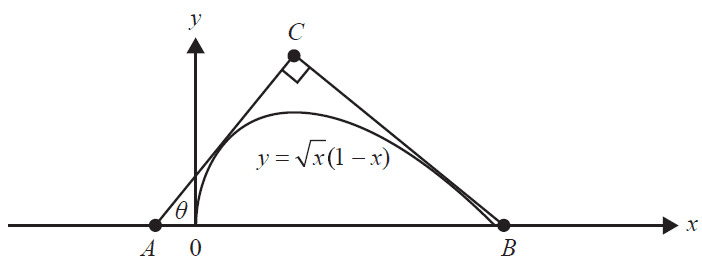
c. Find the equation of the line through \(B\) and \(C\) in the form \(y=mx+c\), for \(\theta = 45^\circ\). 2 marks
d. Find the coordinates of \(C\) when \(\theta = 45^\circ\). 4 marks
End of examination questions
VCE is a registered trademark of the VCAA. The VCAA does not endorse or make any warranties regarding this study resource. Past VCE exams and related content can be accessed directly at www.vcaa.vic.edu.au
